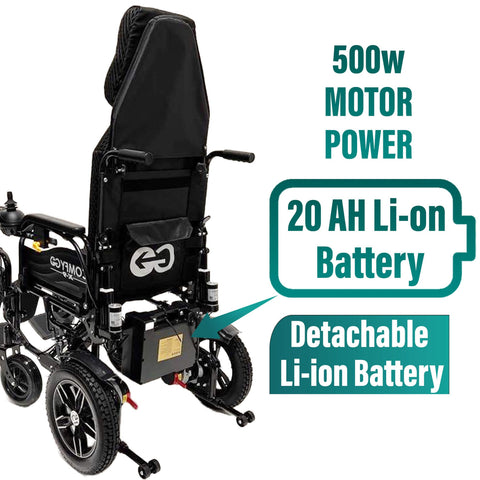Electric Wheelchair Batteries: When Should They Be Replaced?
Electric Wheelchair Batteries: When Should They Be Replaced?
How Often Should Electric Wheelchair Batteries Be Replaced?
The frequency of replacing electric wheelchair batteries depends on several factors, including the type of battery, usage patterns, and maintenance practices. Generally, lead-acid (gel) batteries, which are commonly used in electric wheelchairs, may need to be replaced every 1 to 2 years, while lithium-ion batteries can last between 2 to 5 years before replacement is necessary.
To determine when to replace the batteries, users should monitor their wheelchair's performance closely. Signs that indicate it may be time to replace the batteries include reduced driving range, slower speeds, difficulty in holding a charge, and frequent battery warnings or errors.

How to Extend the Lifespan of Electric Wheelchair Batteries?
While electric wheelchair batteries have a limited lifespan, there are steps users can take to prolong their lifespan and optimize performance:
-
Proper Charging: Follow the manufacturer's guidelines for charging the batteries. Avoid overcharging or allowing the batteries to fully discharge regularly, as these practices can shorten their lifespan. Use a compatible charger and ensure the batteries are fully charged before each use.
-
Regular Maintenance: Perform routine maintenance on the wheelchair, including checking the battery connections, cleaning terminals, and inspecting for any signs of damage or corrosion. Keep the batteries clean and free from debris to prevent interference with performance.
-
Avoid Extreme Conditions: Store the wheelchair and batteries in a cool, dry place, away from direct sunlight and extreme temperatures. Exposure to heat or cold can negatively impact battery performance and lifespan.
-
Use the Correct Charger: Use only the charger provided by the wheelchair manufacturer or a compatible replacement. Using an incorrect charger can damage the batteries and shorten their lifespan.
-
Monitor Usage: Be mindful of how the wheelchair is used and avoid overexerting the batteries unnecessarily. Minimize sudden starts or stops, and avoid carrying excessive weight beyond the wheelchair's capacity.
-
Regular Testing: Periodically test the batteries' performance using a battery tester or by observing the wheelchair's performance during use. If you notice any significant decline in performance, consider replacing the batteries.
Consequences of Not Replacing Electric Wheelchair Batteries on Time
Failure to replace electric wheelchair batteries on time can lead to various negative consequences:
-
Diminished Performance: Worn-out batteries can result in reduced driving range, slower speeds, and overall diminished performance of the wheelchair.
-
Safety Risks: Old batteries may fail unexpectedly, leading to sudden power losses or malfunctions that could compromise user safety.
-
Increased Maintenance Needs: Worn-out batteries can put additional strain on other components of the wheelchair, leading to increased maintenance requirements and potential repair costs.
-
Shortened Lifespan: Neglecting to replace batteries on time can significantly shorten the lifespan of the wheelchair and its components, leading to premature failure and the need for replacement.
-
Inconvenience: Users may experience inconvenience and disruption to their daily routines if the wheelchair becomes unreliable or inoperable due to failing batteries.
In conclusion, proper maintenance and timely replacement of electric wheelchair batteries are essential for ensuring optimal performance, safety, and longevity of the wheelchair. By following recommended practices and monitoring battery health regularly, users can maximize the lifespan of their electric wheelchairs and minimize the risk of unexpected failures.














